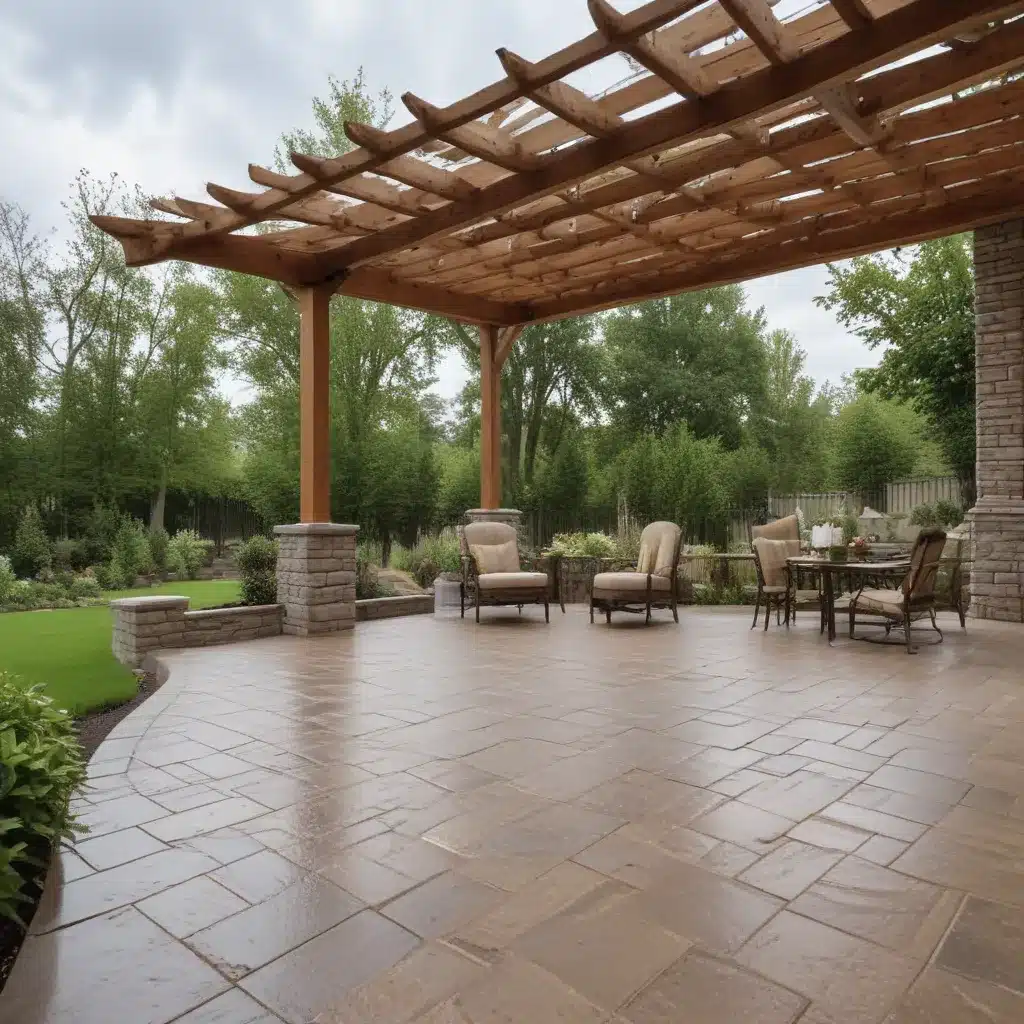
Outdoor living spaces have the power to transform any home, offering a serene refuge from the stresses of daily life. However, the unpredictable nature of the elements can often disrupt our plans to fully embrace our patios and backyards. From scorching summer heat to unexpected rain showers and chilly winter winds, Mother Nature’s temperament can significantly curtail our outdoor enjoyment.
But what if there was a way to weatherproof your patio, creating a versatile oasis that could be enjoyed year-round, regardless of the weather forecast? In this comprehensive guide, we’ll explore the strategies, materials, and installation techniques that can transform your patio into a weatherproof haven, ensuring uninterrupted outdoor living and entertainment.
Essential Patio Materials
The foundation of a weatherproof patio lies in the selection of durable, weather-resistant materials. When it comes to patio paving, concrete, brick, and natural stone are excellent choices for their ability to withstand the elements. These materials not only provide a sturdy surface but also offer excellent thermal properties, helping to regulate the temperature of your outdoor space.
For a more customized look, interlocking pavers are a popular option, as they can be arranged in a variety of patterns and colors to complement your home’s architecture. Pavers are also relatively easy to maintain and can be repaired or replaced individually if necessary.
Wooden decking, while aesthetically pleasing, may require more diligent weatherproofing efforts, such as regular sealing and staining, to protect against moisture, UV damage, and rot. For a lower-maintenance alternative, consider composite or PVC decking, which mimic the appearance of wood but offer superior durability and weatherproofing properties.
Weatherproof Patio Furnishings
Outfitting your weatherproof patio with the right furniture is crucial for ensuring year-round comfort and enjoyment. When selecting patio furniture, look for materials that are inherently weather-resistant, such as aluminum, wicker, resin, or cast aluminum. These materials are not only durable but also easy to maintain, requiring minimal effort to keep them looking their best.
Invest in waterproof cushions and fabrics that can withstand exposure to the elements without becoming discolored or damaged. Outdoor storage solutions, such as weatherproof deck boxes or built-in cabinets, provide a convenient way to protect your patio accessories and keep your space organized.
Outdoor Design Considerations
The layout and orientation of your patio can significantly impact its weatherproofing capabilities. When planning your patio design, consider the prevailing wind patterns and sun exposure in your area, and position your patio accordingly to maximize protection from harsh conditions.
Incorporate integrated weatherproofing features, such as retractable awnings, pergolas, or covered structures, to provide shade, shelter, and temperature regulation. These elements can transform your patio into a comfortable, climate-controlled oasis, allowing you to enjoy the outdoors regardless of the weather.
Complementary landscaping elements, such as strategically placed trees, shrubs, and hedges, can also contribute to the weatherproofing of your patio by offering natural wind and sun protection. By carefully planning your patio’s design, you can create a seamless integration between your indoor and outdoor living spaces, enhancing the overall aesthetic and functionality of your backyard.
Patio Installation Techniques
Proper patio installation is crucial for ensuring long-term weatherproofing and durability. Begin by preparing a sturdy foundation, which may involve excavating and compacting the soil, installing a gravel base, and pouring a concrete slab. This foundation will provide a stable, level surface for your patio paving, minimizing the risk of cracking or unevenness due to shifting soil or weather conditions.
When it comes to the patio paving itself, professional installation is often recommended to ensure proper sealing, drainage, and adherence to local building codes. Experienced patio installers will be familiar with the most weather-resistant paving techniques, such as using polymeric sand or specialized sealants to protect against water infiltration and weed growth.
For DIY enthusiasts, there are several user-friendly paving options, such as interlocking pavers or modular patio tiles, that can be installed with minimal tools and expertise. However, it’s crucial to research and follow the manufacturer’s instructions carefully to ensure a weatherproof and long-lasting result.
Patio Maintenance and Upkeep
Maintaining the weatherproofing of your patio is an ongoing process, but with the right strategies, you can ensure its longevity and continued enjoyment. Regularly cleaning the patio surface, using appropriate cleaning solutions and tools, will help prevent the buildup of dirt, mildew, and other debris that can compromise the weatherproofing.
Develop a seasonal maintenance routine, which may include:
– Sealing or resealing porous paving materials
– Inspecting and repairing any cracks or damage
– Clearing drainage channels to prevent water pooling
– Cleaning and maintaining outdoor furniture and accessories
In the event of severe weather or unexpected damage, be proactive in addressing any issues promptly. Invest in professional repair services if necessary, as they can help restore the weatherproofing and structural integrity of your patio, ensuring its continued protection and usability.
Cost Considerations for Weatherproofing
Weatherproofing your patio is an investment in the long-term enjoyment and value of your outdoor living space. While the initial costs may seem higher compared to a basic patio installation, the benefits of year-round usability, reduced maintenance, and increased property value can make it a worthwhile and cost-effective decision.
When budgeting for patio weatherproofing, factor in the materials, installation labor, and any additional features you may want to incorporate, such as awnings, heating elements, or custom landscaping. While DIY projects can offer cost savings, it’s important to carefully weigh the risks and potential complications against the potential benefits of hiring experienced professionals.
Ultimately, the investment in weatherproofing your patio can pay dividends in the form of extended outdoor living, enhanced property value, and the peace of mind that comes with knowing your outdoor oasis is protected from the elements. Explore the Cincinnati Patiopaving website to learn more about the weatherproofing solutions and services that can transform your patio into a year-round haven.

